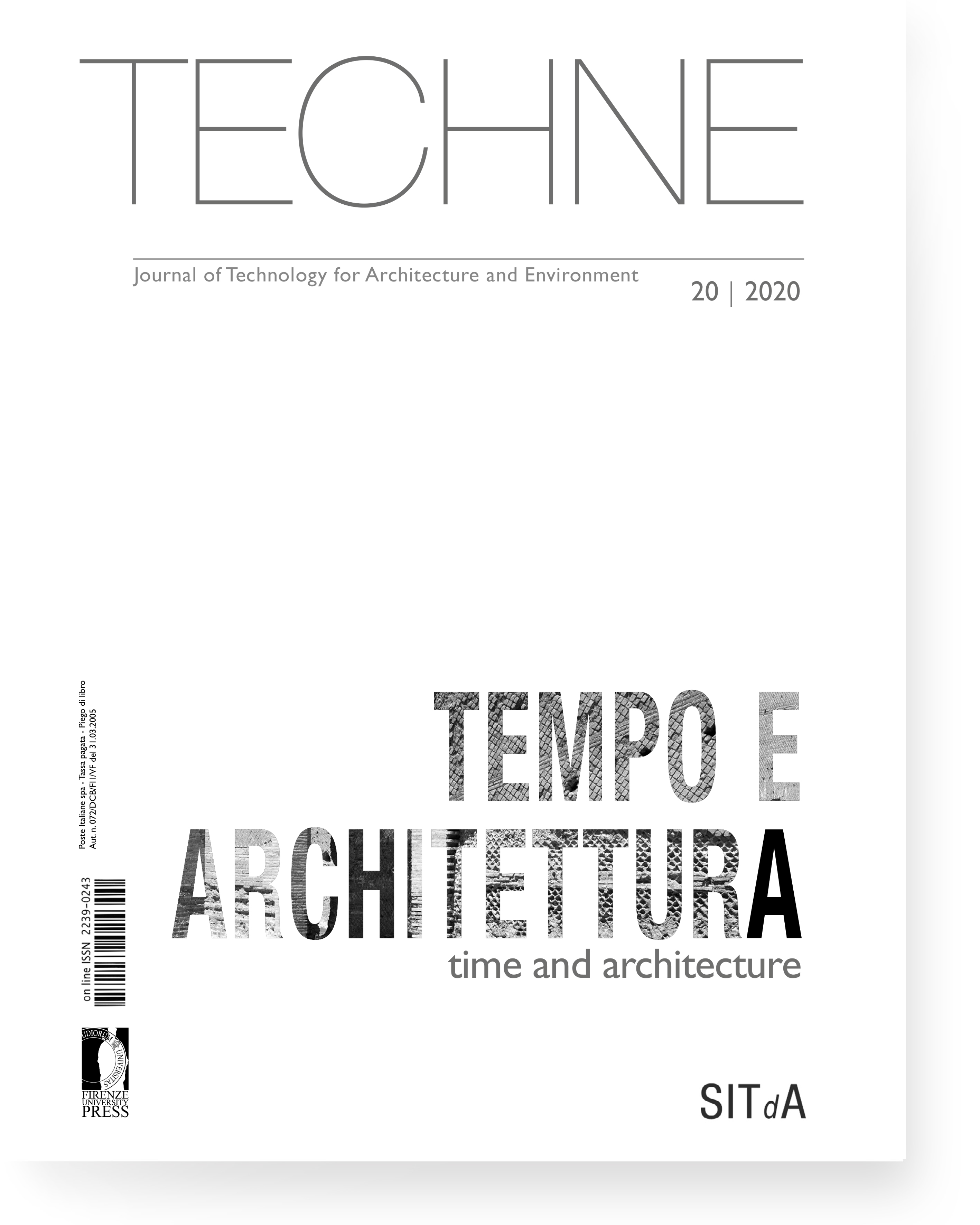Antonio Capestro, Leonardo Zaffi, Il progetto del temporaneo. Tra ricerca e formazione: dispositivi per l’arte, la cultura, il patrimonio
Published 2020-12-20
How to Cite
Abstract
Temporary architecture is «an exercise of extreme synthesis» – says Italo Lupi – «which, on the other hand, has a remarkable communicative capacity, immediate, within everyone’s reach». In its ephemeral nature, it sums up the theoretical and experimental strength of this kind of architecture that finds its meaning in its own destiny.
This kind of work is born programmed to die. It exasperates the elements of architecture, accelerates the design and construction processes, summarizes the cultures of the project, identifies a dimension of specific design, where the conceptual and creative aspects are connected to the constructive and technological ones.
These complex elements, investigated in the book by Capestro and Zaffi, are deepened through a clear structure of contents, composed of four thematic sections. It is pleasant to leaf through it. Nevertheless, it must be explored in depth in its effective articulation to understand its essence. It is part of the series “Ricerche di architettura, restauro, paesaggio, design, città e territorio”, conceived by the publishing house to disseminate the results of research in the specific field. And this text is a mix of experiences of research activities integrated with didactic activities on the topic of temporary architectures, and related expressive and technological potential.
The first part, signed by Capestro, is focused on a reflection on the relationship between ephemeral spaces and the historical contexts in Florence that host the installations. The relationship between permanence and temporariness expresses itself in the potential for activation of the places through temporary interventions in significant historic places.
It is a reflection on temporariness as a declination of an apparently ephemeral architecture which measures itself with historical spaces in a light but careful way. It is an applicative possibility that leaves a relative freedom linked to the temporariness of the intervention and that allows to evaluate the results of the design phases, verifying its feasibility, effectiveness and validity. A process that starts from a critical analysis of the context in which the intervention takes place, of the technical and technological available tools, which allows the synthetic evaluation of the relationships between the technologies and the design implications.
The book offers an opportunity to evaluate the effects of alternative training paths that involve the possibility of measuring with the temporary dimension and the practice of self-construction as activators of potentialities and relationships, and that contribute to define different visions of the same place: a process that is completed thanks to the spatial and emotional experience of the visitor. Therefore, the place becomes dynamic; it triggers suggestions, establishes new alchemies and ephemeral architecture becomes architecture of relationships. An architecture that dialogues with the pre-existence, with its dimensions, creating the right proportions in relation to it. It is an architecture that, even if designed to be quickly dismantled, is characterized by own compositional and technological strength, which brings into play different knowledge and cultures of the project, connecting the creative experience to the subjects of conservation and enhancement of places in a complex system of specificities.
The second section – signed by Zaffi – focuses on the constructive dimension of temporary architecture: a path of identification of the technical and constructive aspects, of materials used as concretization of creative thought, of the effects that an obligatory low-cost approach can have on construction processes. These processes are usually simplified to speed up the phases of realization and integrated with modern production technologies. A speed of execution that requires an accurate executive design elaboration and that presupposes an in-depth knowledge of materials, technologies and manufacturing procedures.
The constructive dimension of the temporary architecture considers the conception and the constructive development as integrated moments: an experimental action on reality, which combines the constructive dimension with the conceptual one. The possibility to be eliminated is implicitly considered and validated, and it is considered a further project data, in which dismantling is assumed, with the consequent reuse of the elements.
This experience is based on the constant dialogue and confrontation of the architect with the curators and artistic directors on the one hand, and with suppliers and workers on the other: a relationship that guarantees the quality of the design outcomes, which requires skills and qualified contributions.
The third section – signed by both authors – is dedicated to projects, as result of researches on ephemeral and temporary structures developed by the DIDALABS - Laboratory of Architecture and Self-Construction – one of the research laboratories of the Department of Architecture of Florence – of which the same authors are founders and current referents.
An educational path that focuses on research as design experimentation, design and construction as moments of deepening and verification of a complex process that goes from conception to realization.
A series of research and didactic experiences have tested the combination of the logic of savings and speeding up of the phases, simplified techniques of assembly (for non-expert workers), with particular digital skills, automated processing and clear and fast construction processes.
The text emphasizes the formative/educational role of the construction-site which, thanks to the involvement of students (and residents, in the case of temporary architecture in public spaces), has itself constituted a participatory and attractive event.
The book closes with the section “Works in progress”, a photographic sequence of site-specific architectures, from their conception to dismantling. A story that deserves its own autonomy, as it is able to summarize differences and similarities between the paths presented in the sections before.
An iconographic apparatus of particular interest, enhanced by an accurate typographic choice, accompanies the reading. A text that balances texts and images, in a discursive effectiveness and formal elegance that conquer.
Danila Longo







